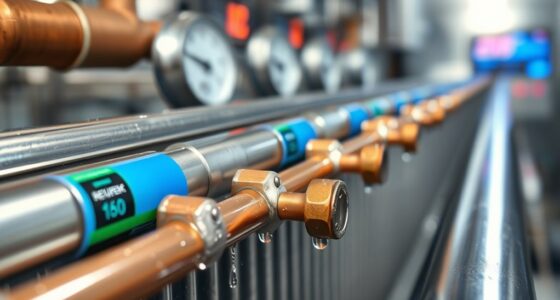Dive into the science behind how heat pumps transfer thermal energy!
We, your trusted experts, delve into the impact of this crucial process on heat pump performance.
Discover how efficient thermal energy transfer optimizes the lifespan and reliability of your heat pump.
Explore the factors affecting this transfer and gain maintenance and troubleshooting tips to ensure maximum efficiency.

Join us on this technical journey to understand the intricate relationship between thermal energy transfer and heat pump operation.
Key Takeaways
- Thermal energy transfer is essential for efficient heat pump operation.
- Factors such as temperature difference, heat exchanger design, refrigerant characteristics, and insulation play a crucial role in thermal energy transfer.
- Optimizing thermal energy transfer can improve heat pump efficiency and energy savings.
- Innovations like variable-speed compressors, enhanced heat exchangers, advanced refrigerants, and smart control systems are driving advancements in thermal energy transfer for heat pumps.
The Basics of Thermal Energy Transfer in Heat Pumps
We frequently use thermal energy transfer in heat pumps to efficiently move heat from one place to another.
The process of transferring thermal energy involves the use of a refrigerant, which absorbs heat from a low-temperature source and releases it to a high-temperature sink.
This transfer is achieved through the use of a compressor, evaporator, and condenser. The compressor increases the pressure and temperature of the refrigerant, while the evaporator allows the refrigerant to absorb heat from the source.

The absorbed heat is then released in the condenser, where the refrigerant condenses and transfers the heat to the sink.
Understanding the Role of Thermal Energy Transfer in Heat Pump Efficiency
When it comes to heat pump efficiency, understanding the role of thermal energy transfer is crucial. The efficiency of heat pumps relies heavily on how effectively thermal energy is transferred from one place to another.
This transfer of energy is what allows heat pumps to extract heat from a source and transfer it to a desired location, providing heating or cooling. By grasping the importance of energy transfer in heat pump efficiency, we can better appreciate the factors that contribute to their overall performance.
Efficiency of Heat Pumps
How does thermal energy transfer impact the efficiency of heat pumps?
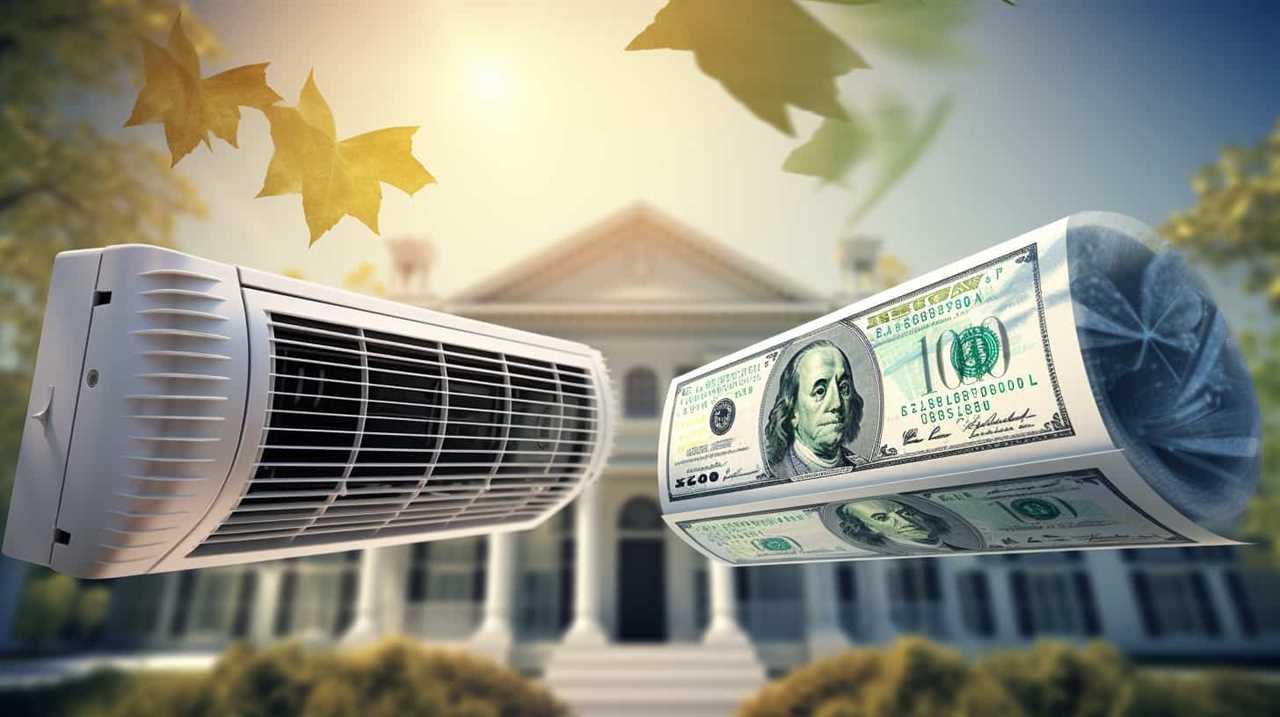
The efficiency of heat pumps is directly influenced by the process of thermal energy transfer. Heat pump performance is determined by how effectively it can extract heat from a low-temperature source and transfer it to a higher-temperature destination. The key to maximizing energy efficiency lies in minimizing any losses during the transfer process.
One factor that affects efficiency is the quality of the heat exchanger used in the heat pump. A well-designed heat exchanger allows for efficient transfer of thermal energy between the refrigerant and the source or destination.
Additionally, the control systems and components within the heat pump must be optimized to minimize energy losses and maximize heat transfer. By understanding and optimizing the role of thermal energy transfer, heat pump efficiency can be significantly improved, resulting in greater energy savings for users.
Importance of Energy Transfer
One important aspect of heat pump efficiency is the role of thermal energy transfer, which directly impacts the overall performance of the system. To understand this, we need to consider two key factors: the importance of insulation and the impact of temperature difference.

Proper insulation is crucial in preventing heat loss or gain during energy transfer, ensuring that the heat pump operates at its optimal efficiency. Ineffective insulation can result in energy wastage and reduced performance.
Additionally, the temperature difference between the heat source and the heat sink affects the rate of energy transfer. A larger temperature difference generally leads to a more efficient heat pump, as it allows for greater heat transfer. However, it’s important to strike a balance, as excessive temperature differences can also lead to inefficiencies and increased energy consumption.
The Impact of Thermal Energy Transfer on Heat Pump Performance
When considering the impact of thermal energy transfer on heat pump performance, it’s crucial to analyze the efficiency of heat pumps and their direct effect on energy consumption.
Understanding how thermal energy transfer influences heat pump performance allows us to evaluate the effectiveness of these systems in terms of converting energy input into useful heating or cooling output.

Efficiency of Heat Pumps
We can improve the efficiency of heat pumps by optimizing the thermal energy transfer, which directly affects their performance. Here are four key ways to enhance the efficiency of heat pumps:
-
Heat pump design: By ensuring proper sizing and placement of components, heat pumps can operate more efficiently. This includes selecting the right compressor, evaporator, and condenser for the specific application.
-
Heat pump operation: Implementing smart controls and optimizing the system’s settings can significantly improve efficiency. This involves adjusting temperature differentials, managing defrost cycles, and utilizing variable speed technology.
-
Insulation and sealing: Properly insulating and sealing the building envelope minimizes heat loss and reduces the workload on the heat pump. By preventing air leaks and improving insulation, the heat pump can operate more efficiently.
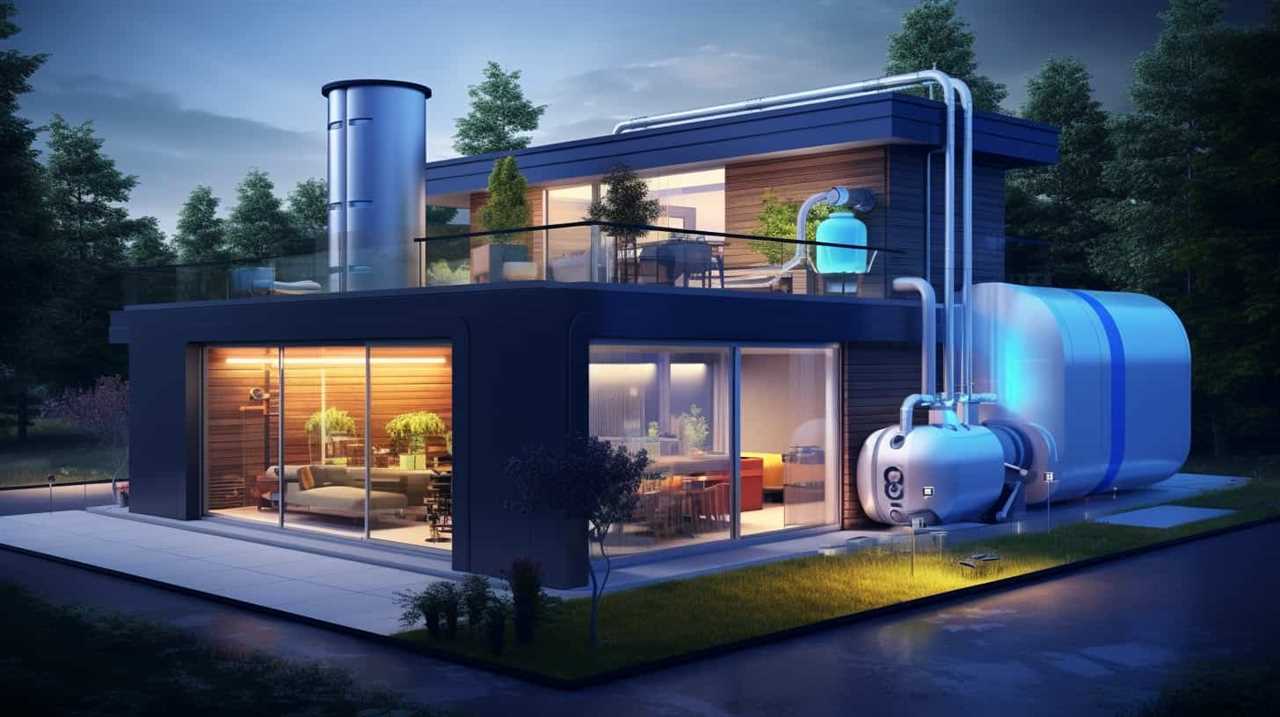
-
Regular maintenance: Performing routine maintenance, such as cleaning coils, lubricating moving parts, and checking refrigerant levels, ensures the heat pump operates at peak efficiency.
Impact on Energy Consumption
Optimizing thermal energy transfer has a significant impact on the energy consumption of heat pumps. The efficient transfer of thermal energy plays a crucial role in the overall performance and cost-effectiveness of heat pump systems. By reducing energy consumption, heat pump users can’t only save on their monthly utility bills but also contribute to a more sustainable future.
To minimize energy consumption, several strategies can be implemented. First, proper insulation and sealing of the building envelope can minimize heat loss or gain, ensuring that the heat pump operates in an optimal condition. Additionally, regular maintenance and cleaning of the heat pump system can improve its efficiency and reduce energy usage. Furthermore, utilizing programmable thermostats and implementing setback temperature strategies can help regulate the operation of the heat pump based on occupancy and demand, further reducing energy consumption.
Factors Affecting Thermal Energy Transfer in Heat Pumps
As researchers, we’ve identified several key factors that directly impact thermal energy transfer in heat pumps. Understanding and optimizing these factors is crucial for maximizing heat pump performance and optimizing energy transfer efficiency.
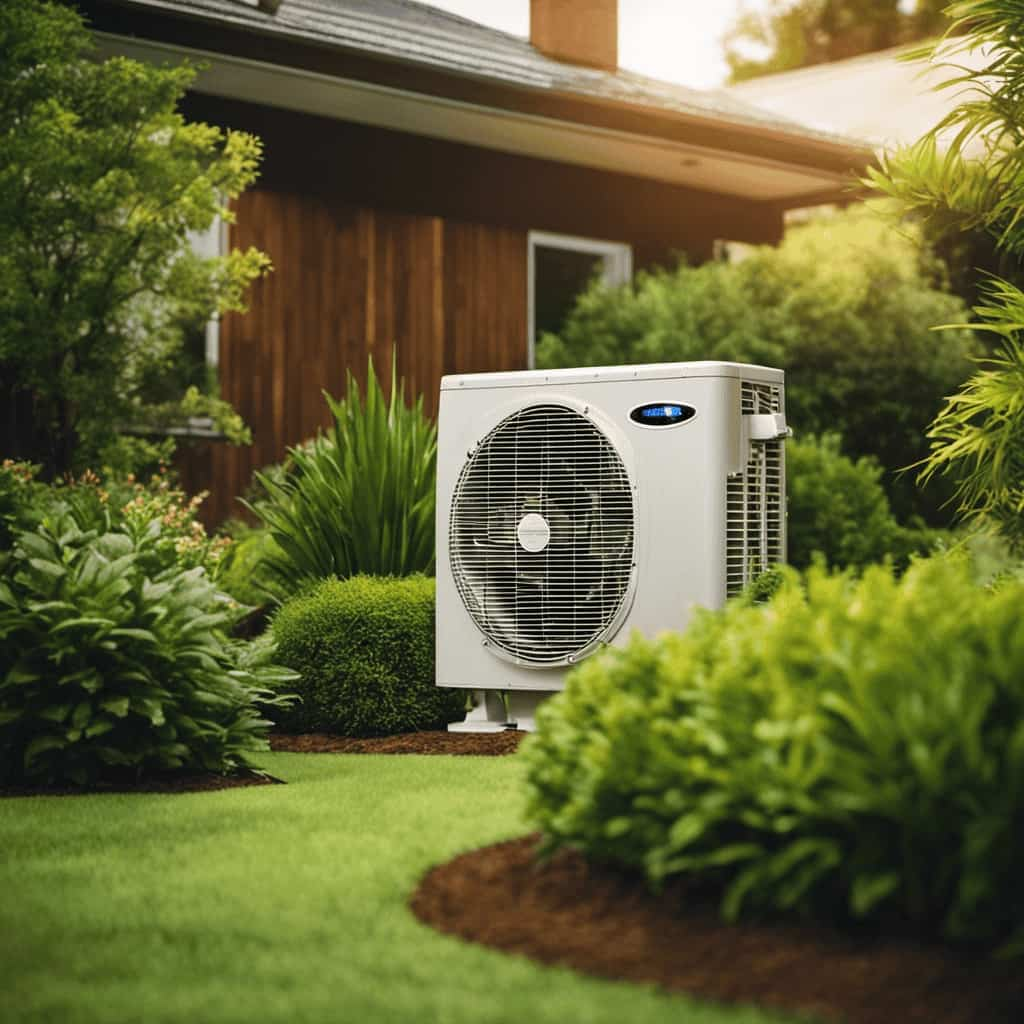
Here are the four main factors that influence thermal energy transfer in heat pumps:
-
Temperature difference: The greater the temperature difference between the heat source and sink, the more efficient the energy transfer will be.
-
Heat exchanger design: The design and efficiency of the heat exchanger play a significant role in the effectiveness of thermal energy transfer. Factors such as surface area, flow rate, and type of heat exchanger material all impact energy transfer efficiency.
-
Refrigerant characteristics: The properties of the refrigerant used in the heat pump, such as its specific heat capacity and phase change properties, affect the amount of energy that can be transferred.

-
Insulation: Proper insulation around the heat pump system prevents heat loss and ensures that the transferred thermal energy is effectively utilized.
Optimizing Thermal Energy Transfer for Extended Heat Pump Lifespan
To maximize the lifespan of heat pumps, it’s imperative to optimize the thermal energy transfer process. By improving heat pump efficiency and optimizing heat pump performance, we can ensure that these systems operate at their best for an extended period of time.
One way to achieve this is by enhancing the heat exchanger design to maximize heat transfer between the refrigerant and the surrounding environment. This can be done by increasing the surface area of the heat exchanger or by using materials with high thermal conductivity.
Additionally, proper insulation and regular maintenance of the system are crucial to minimize energy losses and maintain optimal performance.
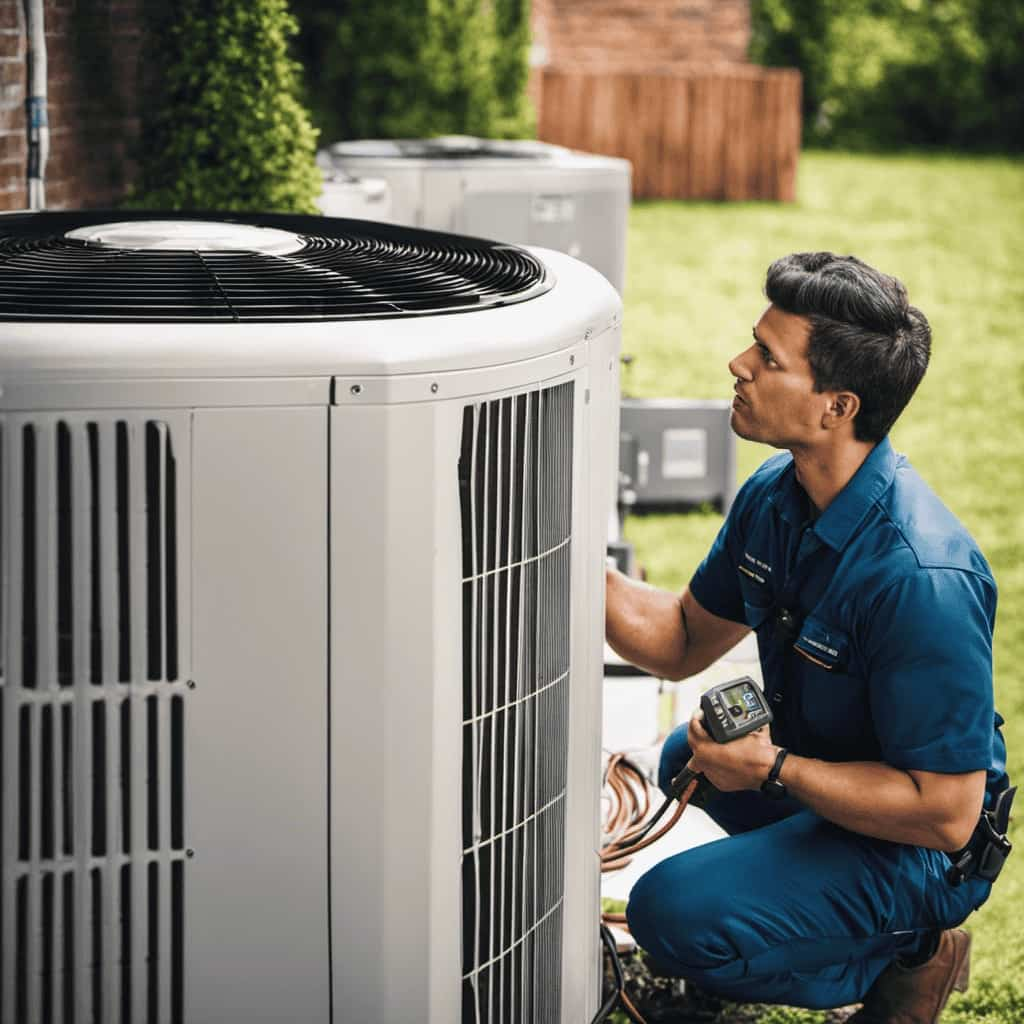
By implementing these measures, we can’t only extend the lifespan of heat pumps but also reduce energy consumption, saving costs in the long run.
Transitioning to the next section, let’s now explore the common challenges in thermal energy transfer for heat pumps.
Common Challenges in Thermal Energy Transfer for Heat Pumps
We have identified several common challenges in thermal energy transfer for heat pumps, including limited heat transfer capacity and inefficient heat exchange. These challenges can significantly impact the efficiency and overall performance of heat pumps.
To optimize efficiency and address these challenges, it’s important to consider the following:
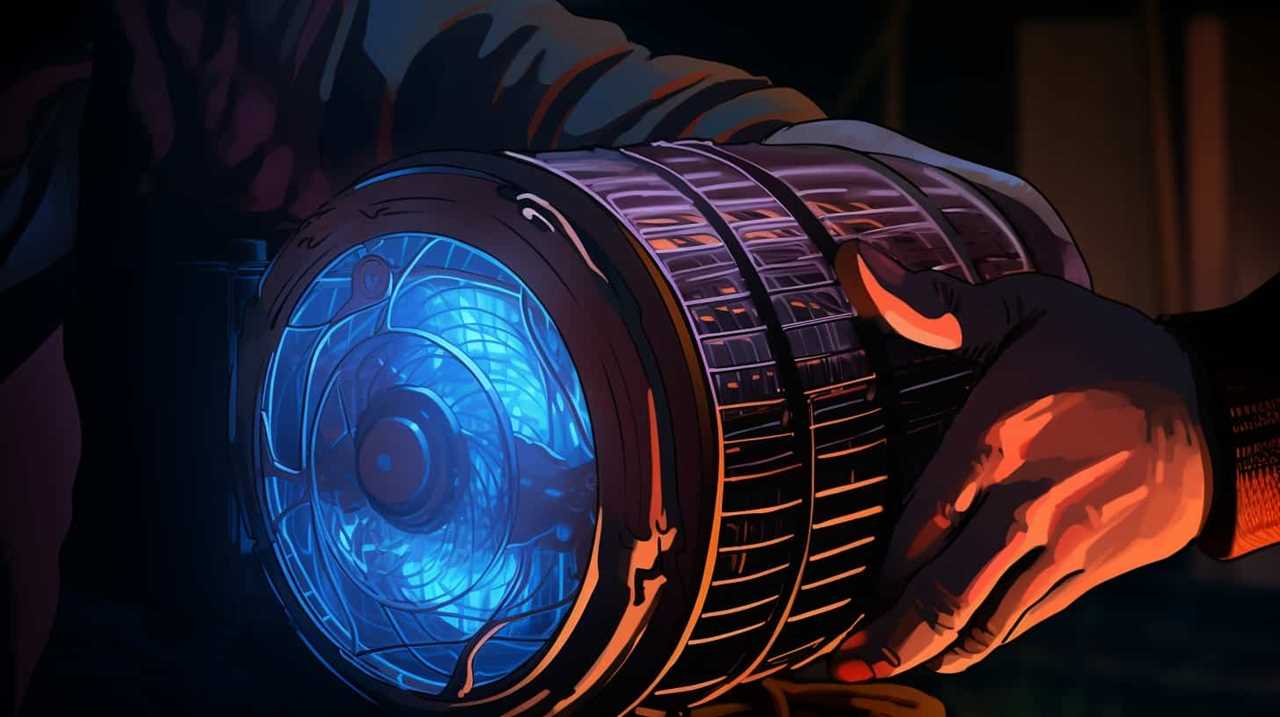
-
Insufficient heat transfer capacity: Heat pumps may struggle to transfer enough thermal energy due to limitations in the heat transfer capacity of the system. This can result in reduced heating or cooling output and increased energy consumption.
-
Inefficient heat exchange: Inefficient heat exchange between the heat pump and the surrounding environment can lead to energy losses and decreased overall efficiency. Poor insulation, improper sizing of components, and inadequate airflow can all contribute to inefficient heat exchange.
-
Temperature differences: Large temperature differences between the heat source and the heat sink can pose challenges in transferring thermal energy effectively. These differences can cause lower heat transfer rates and decreased system efficiency.
-
System maintenance and performance degradation: Over time, heat pumps may experience performance degradation due to factors such as dirt accumulation, refrigerant leaks, or component wear. Regular maintenance and monitoring are essential to ensure optimal performance and efficiency.

Innovations in Thermal Energy Transfer Technology for Heat Pumps
As we explore the subtopic of ‘Innovations in Thermal Energy Transfer Technology for Heat Pumps’, it’s important to highlight the significant efficiency improvements that have been achieved in heat pumps. These advancements not only enhance the overall performance of heat pumps but also contribute to a reduction in energy consumption and cost.
Additionally, there have been notable developments in thermal conductivity, allowing for more efficient transfer of thermal energy within heat pump systems.
Efficiency Improvements in Heat Pumps
Our research has identified several key innovations in thermal energy transfer technology that have significantly improved the efficiency of heat pumps. These advancements focus on improving efficiency and enhancing performance, allowing heat pumps to provide more effective heating and cooling solutions.
Here are four notable innovations in this field:

-
Variable-speed compressors: By adjusting the compressor’s speed based on the heating or cooling demand, variable-speed compressors can optimize energy usage and reduce wasted energy.
-
Enhanced heat exchangers: Improvements in heat exchanger design and materials have increased heat transfer efficiency, enabling heat pumps to extract more heat from the air or ground.
-
Advanced refrigerants: New refrigerants with improved thermodynamic properties have been developed, resulting in better heat transfer and enhanced overall performance.
-
Smart control systems: Intelligent control algorithms and sensors allow heat pumps to adapt to changing conditions, optimizing their performance and energy consumption.
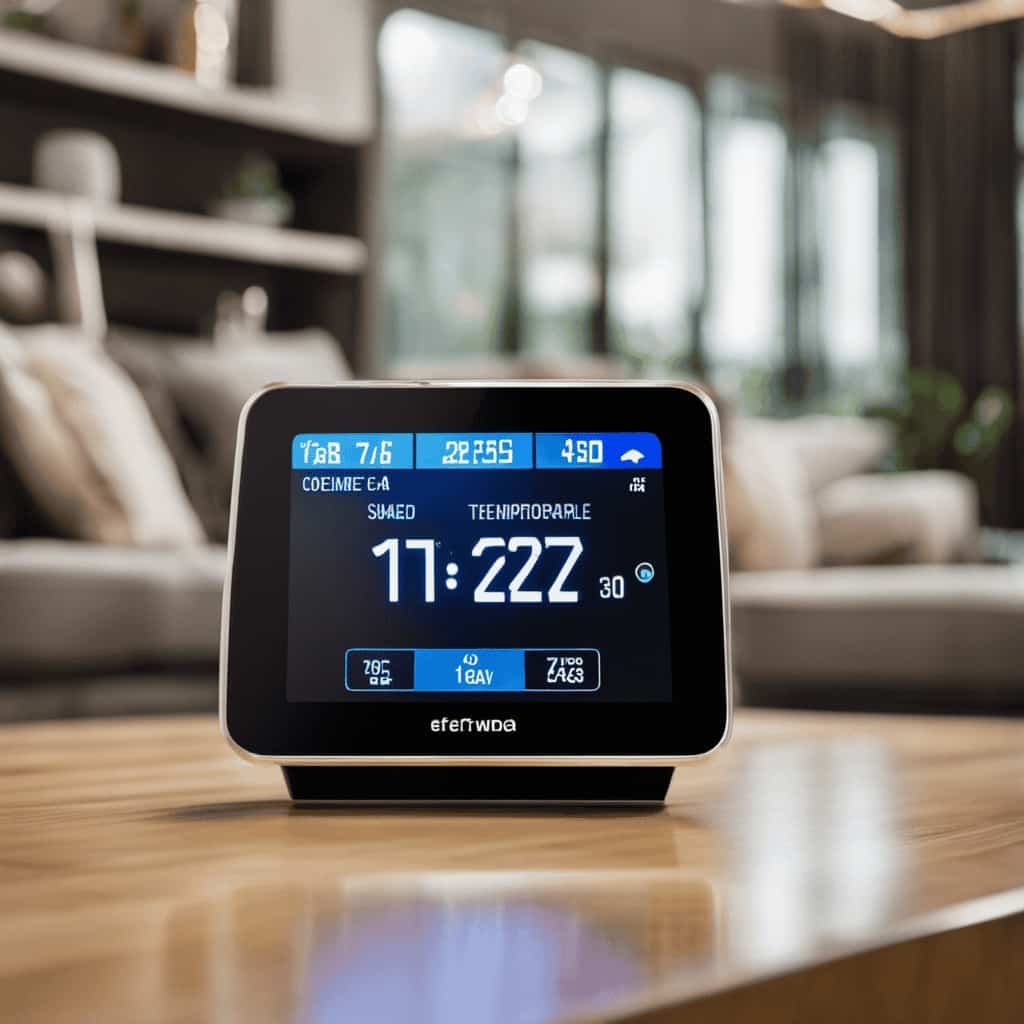
These innovations have played a vital role in making heat pumps more efficient and reliable, providing homeowners and businesses with cost-effective and environmentally friendly heating and cooling solutions.
Advancements in Thermal Conductivity
Four major advancements in thermal conductivity have revolutionized the field of thermal energy transfer technology for heat pumps. These advancements include breakthroughs in insulation materials and the understanding of the impact of temperature gradients on thermal conductivity.
Advancements in insulation materials have led to the development of highly efficient and durable materials that can effectively trap and transfer heat. These materials have significantly improved the overall efficiency of heat pumps by reducing heat loss and increasing heat transfer rates.
Furthermore, the impact of temperature gradients on thermal conductivity has been extensively studied, leading to a better understanding of how heat is transferred across different temperature ranges. This knowledge has allowed for the optimization of heat pump designs, resulting in improved performance and energy efficiency.

As a result of these advancements, heat pumps are now more reliable, cost-effective, and sustainable, making them a valuable technology in serving the needs of individuals and communities.
Maintenance and Troubleshooting Tips for Efficient Thermal Energy Transfer
To maximize efficiency, we recommend regular maintenance and diligent troubleshooting for optimal thermal energy transfer in heat pumps. Here are some maintenance tips and troubleshooting techniques to ensure your heat pump operates at its best:
-
Regularly clean and replace air filters to prevent dirt and debris from obstructing airflow and reducing heat transfer efficiency.
-
Check and clean the outdoor unit regularly to remove any debris or vegetation that may hinder heat exchange.
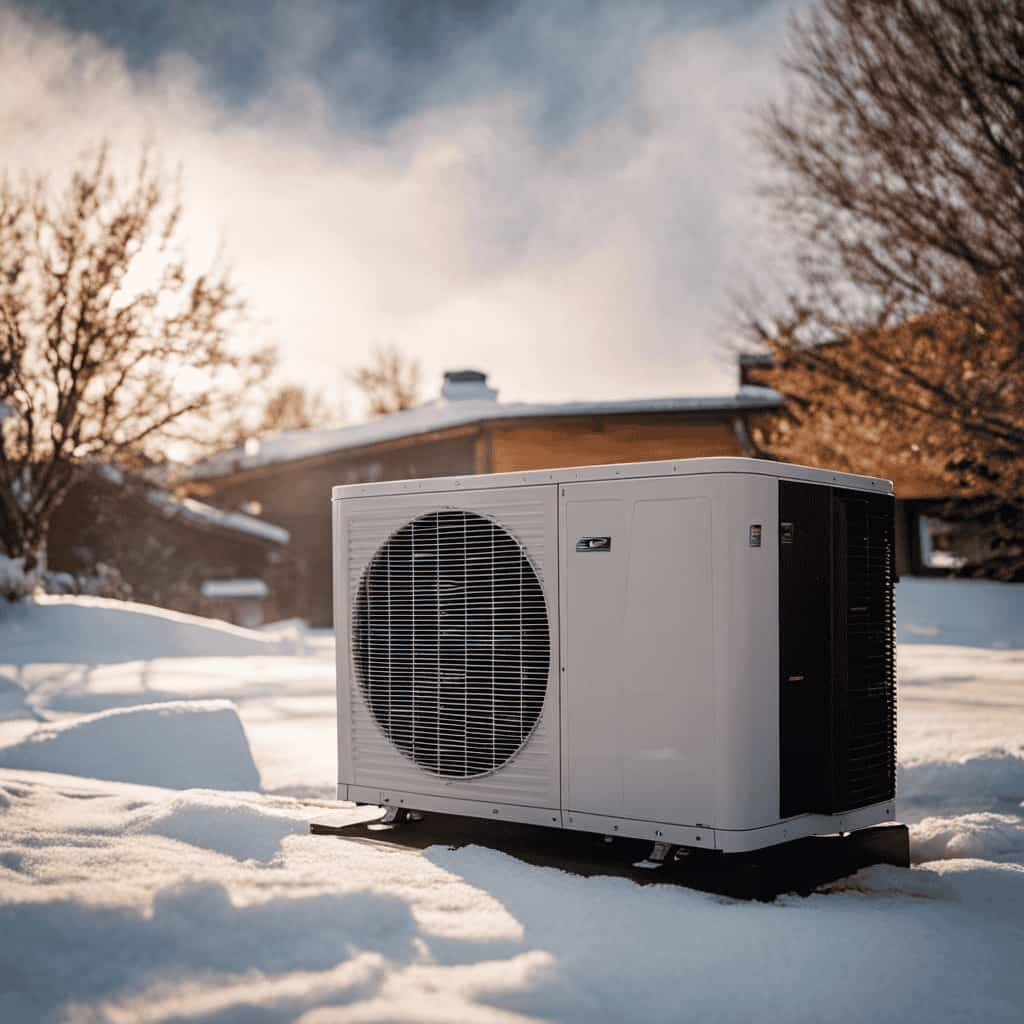
-
Inspect and clean the evaporator and condenser coils to remove any buildup of dirt or contaminants that can impede heat transfer.
-
Monitor refrigerant levels and ensure they’re at the correct levels to prevent reduced heat transfer efficiency.
The Relationship Between Thermal Energy Transfer and Heat Pump Energy Consumption
We can explore the correlation between thermal energy transfer and heat pump energy consumption by analyzing the efficiency of the transfer process and its impact on overall energy usage.
Heat pump performance is heavily dependent on the ability to transfer thermal energy effectively. When the transfer process is efficient, the heat pump consumes less energy, resulting in improved energy efficiency.
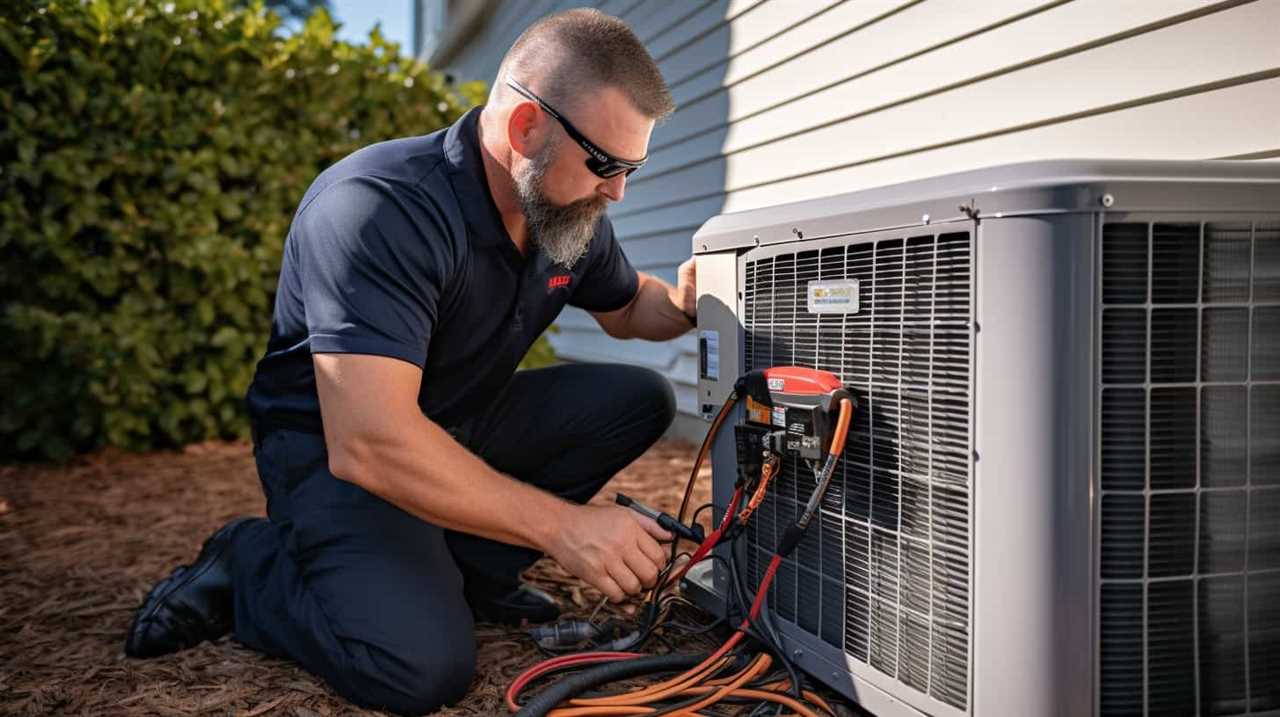
The efficiency of thermal energy transfer is influenced by factors such as the design and size of the heat exchanger, refrigerant properties, and the temperature difference between the heat source and the heat sink. By optimizing these factors, heat pump manufacturers can enhance the performance of the system and reduce energy consumption.
Understanding the relationship between thermal energy transfer and heat pump energy consumption is crucial for maximizing energy efficiency and reducing operational costs.
In the next section, we’ll examine how thermal energy transfer impacts heat pump reliability.
How Thermal Energy Transfer Impacts Heat Pump Reliability
As we delve into the topic of how thermal energy transfer impacts heat pump reliability, it becomes evident that the efficiency of this transfer process plays a crucial role in ensuring the longevity and dependable performance of heat pumps. To better understand the reliability factors and troubleshooting techniques related to thermal energy transfer and heat pumps, consider the following:

- Proper insulation: Adequate insulation around the heat pump system minimizes heat loss and improves overall efficiency.
- Regular maintenance: Routine inspections and maintenance help identify and address any issues before they escalate, ensuring optimal performance and preventing breakdowns.
- Clean filters: Dirty filters restrict airflow, making the heat pump work harder and reducing its reliability. Regular filter cleaning or replacement is necessary.
- Correct refrigerant levels: Maintaining the appropriate refrigerant levels ensures efficient heat transfer and prevents unnecessary strain on the system.
Future Trends in Thermal Energy Transfer for Heat Pumps
The future of thermal energy transfer for heat pumps holds promising advancements in efficiency and sustainability. As technology continues to evolve, we can expect to see significant improvements in heat pump performance and energy efficiency.
One of the key future trends in thermal energy transfer is the development of advanced refrigerants that have lower global warming potential (GWP) and ozone depletion potential (ODP). These new refrigerants won’t only enhance the environmental sustainability of heat pumps but also improve their overall efficiency.
Additionally, advancements in heat exchanger design and materials will contribute to higher heat transfer rates and reduced energy losses. The integration of smart controls and machine learning algorithms will further optimize heat pump operations, allowing for better system performance and energy savings.
These future trends in thermal energy transfer for heat pumps demonstrate the industry’s commitment to advancing technology and creating more sustainable and efficient heating solutions.
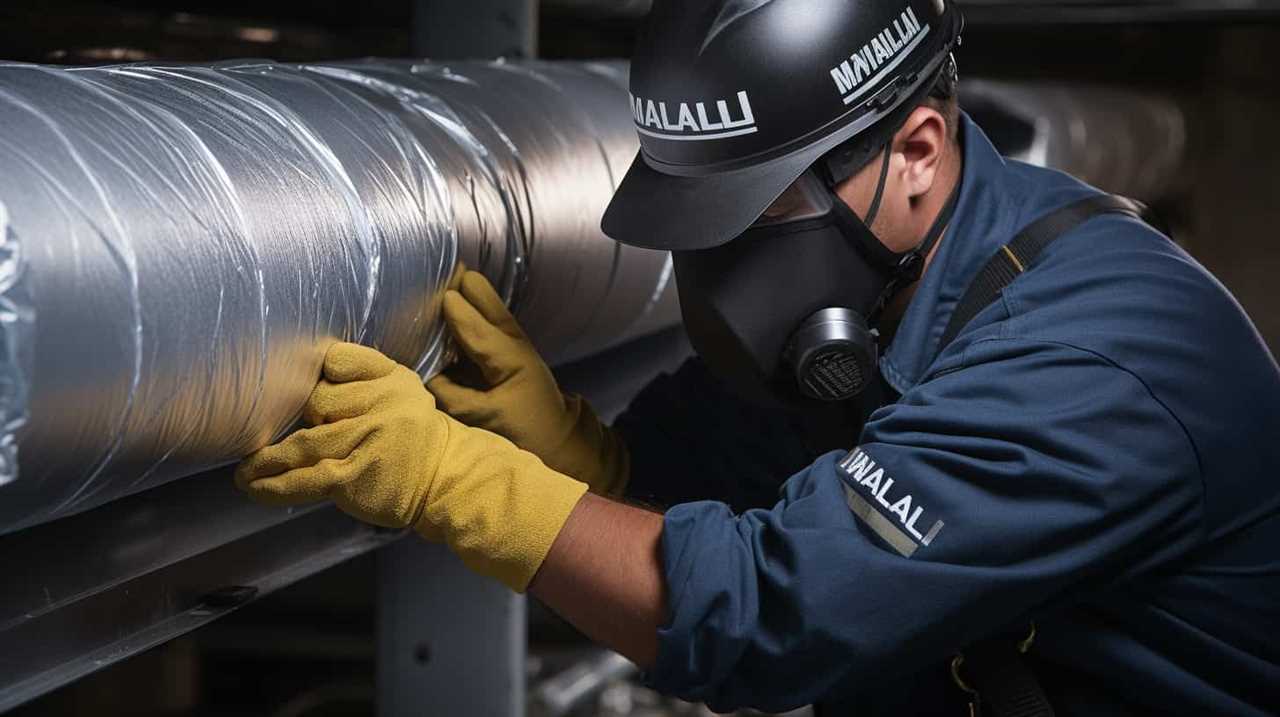
Frequently Asked Questions
What Are the Different Types of Thermal Energy Transfer in Heat Pumps?
There are different types of thermal energy transfer in heat pumps, including conduction, convection, and radiation. These processes play a crucial role in transferring heat from one location to another, ensuring efficient operation of heat pumps.
How Does Thermal Energy Transfer Affect the Efficiency of a Heat Pump?
Thermal energy transfer greatly affects the efficiency of heat pumps. The insulation’s impact is crucial in optimizing performance. Understanding these factors allows us to serve others by providing effective and efficient heating solutions.
Are There Any Factors That Can Hinder Thermal Energy Transfer in Heat Pumps?
Factors hindering thermal energy transfer in heat pumps can include inadequate insulation, air leaks, and poor system design. Proper insulation is crucial for preventing heat loss and ensuring efficient heat transfer, improving the overall performance of the heat pump.
What Are Some Common Challenges Faced in Thermal Energy Transfer for Heat Pumps?
Challenges in thermal energy transfer for heat pumps include efficiency limitations and potential performance issues. These obstacles must be overcome to ensure optimal operation and deliver reliable service to customers.

What Are the Latest Innovations in Thermal Energy Transfer Technology for Heat Pumps?
Innovations in thermal energy transfer technology for heat pumps have brought numerous benefits. These advancements have improved efficiency, increased performance, and reduced environmental impact. Overall, they have revolutionized the way heat pumps operate.
Conclusion
In conclusion, the intricate dance of thermal energy transfer in heat pumps is a marvel to behold. While it may seem paradoxical that the transfer of heat can both enhance efficiency and impact performance, this delicate balance is what ensures the extended lifespan of these devices.
By optimizing thermal energy transfer and diligently maintaining the system, we can’t only reduce energy consumption but also enhance reliability.
As we look to the future, advancements in thermal energy transfer will continue to revolutionize the world of heat pumps.






